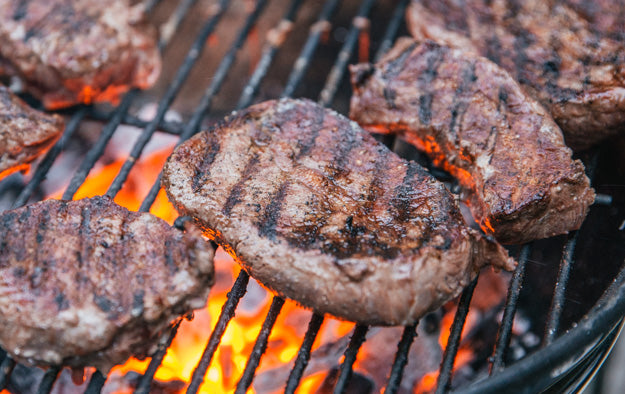
Tonight, my wife asked if I wanted to grill steak for dinner. While I hesitated for a moment (inexplicably) I thought I heard her ask, “Well, I could always boil it.” I laughed before she clarified that she said “broil”, not “boil”. The moment reminded me of our previous observations about how essential variety of texture is in high quality ‘artisanal’ food. Boiled steaks are perfectly and uniformly cooked, there are no char marks from the grill, and the process is a much simpler operation. What more could you ask for? It seems that boiling steak should be an ideal way to cook meat, right? Wrong. Roaring flames leaving grill marks on steak is commonly thought of as tantalizing.
On a recent anniversary dinner with my wife, I ordered a lovely seafood paella. As a dish new to me, I was surprised to find it topped with traditional soccarrat, the charred layer of rice at the bottom of the pan. Although I was very skeptical, it turns out I was wrong. It added a wonderful subtle complexity to the seafood and chorizo dish. My palate was surprised with new flavors and texture and was intrigued to discover what was coming next. I think this is part of what’s going on with grill marks on steak, too: it is an intriguing variety for your palate to explore. Whether that kind of dining experience is your bag or not, it is significant to note that in a culinary mind, no flavor is inherently bad. It’s about balancing variety.

What does this have to do with furniture, you ask? I think it has lots to do with it. In an age where perfection and uniformity is praised, I think we are due for a corrective swing. Rather than viewing tools marks and all tear out as inherently bad, I think we should embrace variety of texture in the way a master chef does. While the drawer face is smoothed with the sweet and salty (almost imperceptible) undulations of a smoothing plane, the bottom is balanced with the sours and bitters of tear-out and foreplane tracks. I’ve found that in this yin and yang approach to aesthetic balance our handmade furniture comes to life. I've gone on about this in the Foundations video but I think we would do well to introduce this kind of thinking into our 21st century woodworking palates.
What do you think, readers? Have you tried to intentionally introduce variety of texture in your work? Does this kind of thought process happen to you, too? Somehow even routine dining makes you think about your woodworking…?

